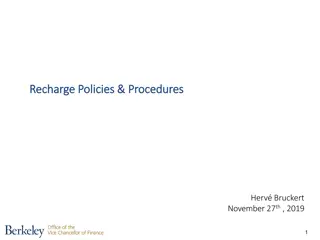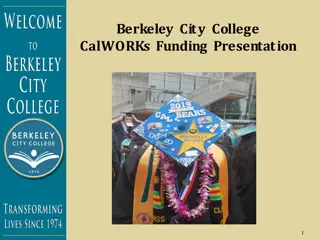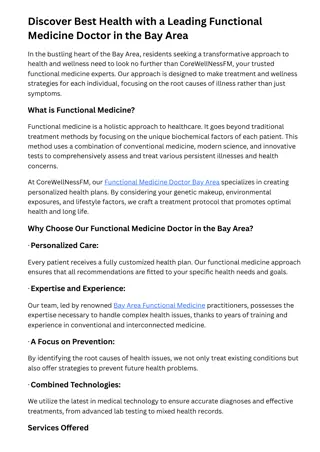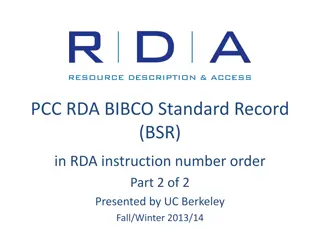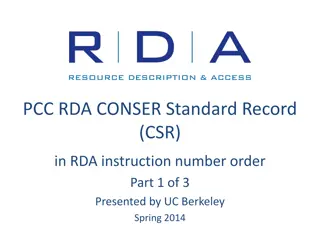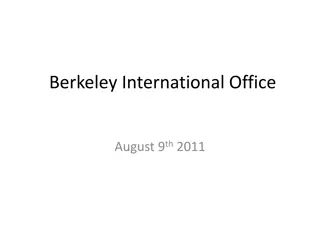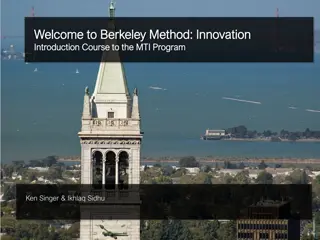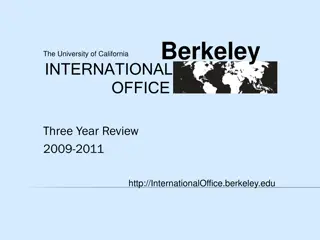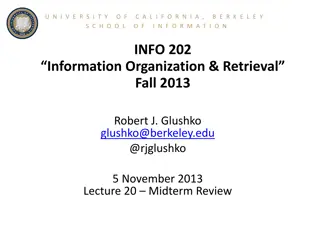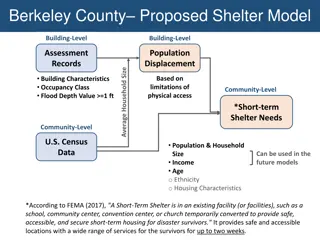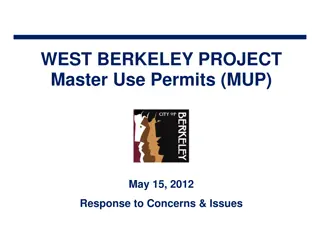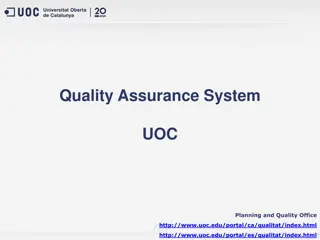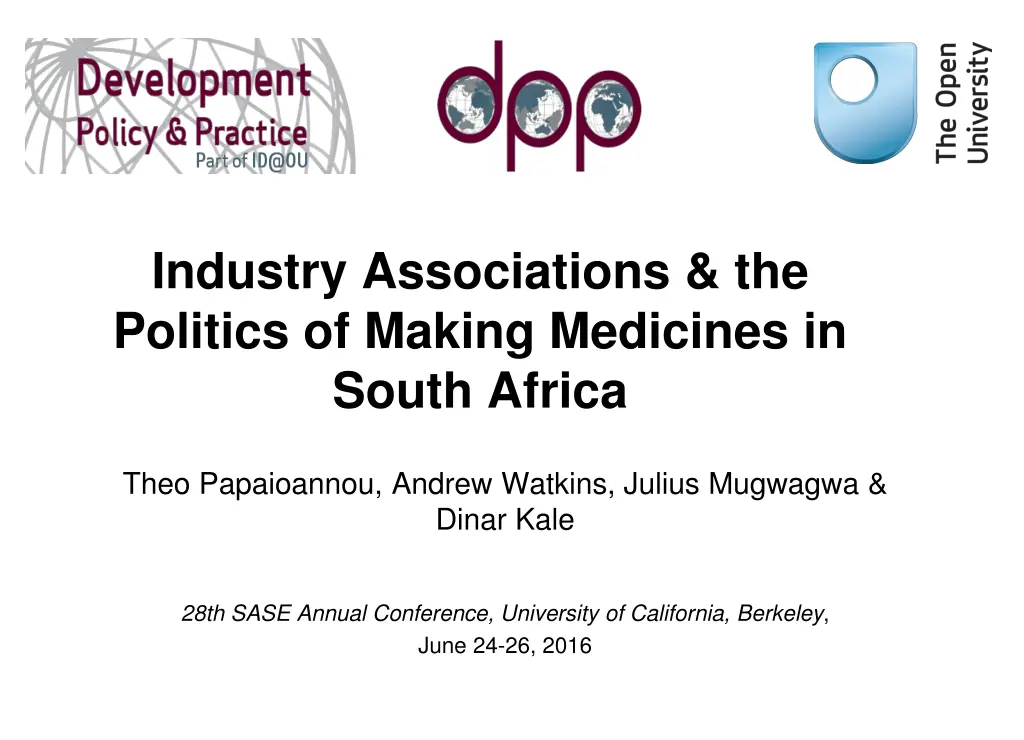
Shaping Policy through Industry Associations in South Africa
Explore the intricate relationship between industry associations and government in South Africa concerning the production of medicines. Uncover the evolving dynamics and key findings regarding regulatory environments and collaborative partnerships in the pharmaceutical industry.
Download Presentation

Please find below an Image/Link to download the presentation.
The content on the website is provided AS IS for your information and personal use only. It may not be sold, licensed, or shared on other websites without obtaining consent from the author. If you encounter any issues during the download, it is possible that the publisher has removed the file from their server.
You are allowed to download the files provided on this website for personal or commercial use, subject to the condition that they are used lawfully. All files are the property of their respective owners.
The content on the website is provided AS IS for your information and personal use only. It may not be sold, licensed, or shared on other websites without obtaining consent from the author.
E N D
Presentation Transcript
Industry Associations & the Politics of Making Medicines in South Africa Theo Papaioannou, Andrew Watkins, Julius Mugwagwa & Dinar Kale 28th SASE Annual Conference, University of California, Berkeley, June 24-26, 2016
Introduction The making and delivery of new medicines and generics is not only a process of STI, but also a process that is inherently political. The relational/political interactions between industry and government are key to the shaping of regulatory environments that either promote or constrain an industry s ability collectively learn, innovate, and grow. Critical to these interactions are industry associations and various advocacy groups that promote knowledge exchange institutional capacity building. In developing countries, such intermediaries are likely to play a prominent role in filling institutional knowledge gaps toward shaping regulation (Kshetri & Dholakia, 2009). Our work builds upon these notions by analysing the changing role of biopharmaceutical industry associations and related umbrella organisations in South Africa. We focus on the ways in which changing political context and institutional interplay have shaped a South African industry-government relational trajectory that is historically uneven and reactively contentious.
Overall Analysis & Findings Our analysis considers developments during three main periods: (1) a period of pre-liberalisation; (2) a period of expanding pluralism; and (3) a period of characterised by increasing partnership. While the activities of industry associations reside primarily in the 2nd and 3rd periods, a discussion of the 1st period is also important. Findings indicate that two decades of both increasing pluralism and globalisation have created tensions amidst regulatory uncertainties between government and the pharmaceutical industry regarding: access to medicines and strong intellectual property rights (IPRs). We suggest that such uncertainties can be reduced through improving interaction between biopharmaceutical industry associations and government and civil society organisations (CSOs). This can result to more legitimate and cumulative platforms for partnering on a number of regulatory issues and broader, more holistic development aims.
Industry Associations & Policy Subsystem Industry associations are: specific member-based organisations that actively lobby/negotiate with government on their member s behalf to shape policy. Included in this are: business umbrella groups e.g. chambers of commerce who represent the interests of a number of industries and sectors. These organisations are part of what Sabatier (1991) describes as the policy subsystem comprised of intermediary bodies regularly involved in the shaping of policy (Jenkins-Smith and Sabatier, 1994). For developing/emerging countries, this subsystem is bound to be particularly important where: given institutional capacities for innovation and industry growth will often be lacking (Frankel, 2006), and their potential development will be the result of politically contested relations between government, industry, and civil society. For successfully advocating their members interests, industry associations will: employ wide reaching knowledge and information dissemination activities develop and maintain working relations with key individuals and ministries be capable of building widespread industry coalitions for engaging with government and its bureaucracy.
Critique of Industry Associations Despite their potential contribution to development, industry associations are often viewed as controversial actors of innovation and development. As early as the 18th century, Adam Smith accused industry associations of playing a negative role in the economy, conspiring against the public or raising the prices of goods. More recently, industry associations have been viewed as special interest groups and/or elitist organisations that pursue narrow rents at the expense of the wider sector and economy discouraging competition and innovation within an industry (see Olson, 1982; Schmitter & Streeck, 1999). This aligns with ideas concerning corporatism where national economic policy is formed through closely coordinated collaboration between government, industry and labour; either imposed by government (state corporatism) or formed voluntarily (neo-corporatism) (See Schmitter 1974; Cawson, 1986). Schmitter (1974) was concerned with what he coined societal corporatism where a small number of interest organisations are able to monopolise the policy subsystem, competitively eliminating other interest groups, and essentially forcing the government to enter into collaborative relations with industry due to political necessity (Maree, 1993).
State-Industry Relations & Coalitions Government-industry relations are often referred to as coalitions This implies co-dependence and/or cooperation between government-industry is not only inevitable but necessary. In developing countries, government-industry relations may be characterised as growth coalitions , ranging from weak growth coalitions (Moore and Schmitz, 2008:1) to strong growth coalitions (Brautigam et al, 2002). Since the 1980s, a main focus of political-industrial settlements or government- industry relations has been the implementation of neo-liberal economic policies. Cornerstones of these policies include: currency stabilisation; denationalisation of industry; trade liberalisation through the lowering of trade barriers; providing incentives for exporters; reducing favourable treatment of domestic firms; the cutting of deficits for decreasing inflation and lowering interest rates. Results of neo-liberal growth coalitions have been mixed, with many developing countries experiencing sharp yet isolated increases in growth and wealth production amidst continued widespread poverty and inequality. For developing countries, therefore, government-industry growth coalitions need to evolve to a more development oriented model focused on poverty and inequality reduction (Brautigam, 1997, 2009; Handley, 2008).
Global Pharma & South Africa Global biopharmaceutical industry is comprised of: a relatively small number of large research oriented MNCs based mainly in the developed north, and a large number of both small and large companies that manufacturer generic medicines both in the developed north, and increasingly so in the developing south. The growth of the generics medicines industry and its impact on research based MNCs have created considerable fragmentation and conflict within the pharmaceutical industry and between the pharmaceutical industry and the governments of emerging countries such as South Africa. South Africa has emerged as the biopharmaceutical industry forerunner in Africa with a significant presence of biopharmaceutical industry associations. However, its market worth of US$2.8bn in 2012 is relatively small and constitutes less than 1% of the market globally. In 2011 two leading pharmaceutical companies in South Africa were domestically based MNCs Aspen Pharmacare and Adcock Ingram domestic companies import up to 90% of active pharmaceutical ingredients from other countries, including India and China.
Current Industry Associations in SA Most foreign and South African MNCs are members of IPASA. IPASA currently represents 24 companies dedicated to producing innovative medicines in South Africa. According to IPASA, only companies that conduct their own R&D qualify for membership. Small domestic companies with no IP are excluded from this new association. In addition to IPASA there is: the National Association of Pharmaceutical Manufacturers (NAPM); Self Medication Manufacturers Association of South Africa (SMASA); National Association of Pharmaceutical Wholesalers (NAPW), among others. Many of these associations and member companies are also members of the leading chambers of commerce, CHAMSA and SACCI, and connect with one another through these platforms. This current status of industry has evolved through two main periods: Pre- liberalisation and the Post-apartheid era.
Pre-liberalisation Era Tensions between the pharmaceutical industry and the government in South Africa are rooted in a long history of non-negotiable relations between political and business elites which have carried over into the post-apartheid era. During the Apartheid era, the government maintained the white minority through ever increasing control/exploitation of the black majority. This necessitated a command oriented state, the brutal subjugation of blacks, and the complicity of white owned industry which was dominated by a small number of large state supported conglomerates all linked in some manner to the gold mining industry. With an economy stagnated and resulting sanctions and boycotts, the Apartheid government lacked the ability/capacity to either invest in a broad based STI infrastructure (e.g. weak university R&D) or facilitate the growth of technology based industries (the exception being defence). A strong domestic pharmaceutical industry was never really established in South Africa during this period but the need for medicines meant large pharmaceutical MNCs continued to sell medicines. During this period, the main biopharmaceutical industry associations were: the South African Pharmaceutical Manufacturers Association (PMA), established in 1967; and the National Association of Pharmaceutical Manufactures, established later in 1977.
Post-apartheid Era South Africa s transition to democracy in 1994 led to weakening the corporatist hold of the state and strengthening civil society (Lehman, 2008). Pluralism and corporatism seem to coexist in post-apartheid South Africa. The relationships between industry associations and state appear to be co- operative; governments tend to view the business elites as a key player in pro- market liberal reforms. In this post-apartheid mix of corporatism and pluralism, large pharmaceutical companies began to re-establish themselves in South Africa, insisting on strong protection of patented drugs through TRIPS. On the other hand, CSOs such as non-governmental organisations (NGOs) and advocacy groups began to formally participate in the policy-making process (Lehman, 118). In 1994 there were more than 50,000 NGOs in South Africa, most of them pursuing development objectives (Fioramonti, 2005). In pre-apartheid era the state established strong regulatory set up to protect white populations from the epidemic of poor black communities. In post-apartheid era the state inherited this regulatory capacity (ibid) and relied on this to protect public health from the spread of diseases such as HIV/AIDS.
Big Pharma v Nelson Mandela One well known intervention was government s 1997 Medicines and Related Substances Control Act that would allow South Africa to import and manufacture cheaper generic HIV drugs. This act prompted 39 big pharmaceutical companies (mainly MNCs) to file through PMA a patent right lawsuit against the South African government. In response, CSOs and activists accused PMA of violations of the human right to health by making essential medicines unaffordable and called the international community to protect developing countries against big pharmaceutical companies (Wolff, 2012). Although in 2001 PMA agreed to drop the lawsuit as a result of the growing opposition, it was too late. PMA suffered an international public relations disaster with 3 MNCs i.e. GlaxoSmithKline, Merk and Bristol-Meyers Squibb, breaking ranks with 36 other companies and pushing hard for a settlement that would stave off increasing damage (The Guardian, 2001). Eventually, these 36 companies agreed to go along with the lawsuit withdrawal but PMA dissolved, splitting into two new associations: the Pharmaceutical Industry Association of South Africa (PIASA) and the Innovative Medicines South Africa (IMSA).
PIASA PIASA was an association of companies involved in the manufacturing and marketing of medicines in South Africa. Its members were research-based MNCs and local manufacturers of pharmaceuticals. PIASA had about 90 members, consisting of both large and small companies. Other organisations, such as the South Africa Medical Device Industry Association (SAMED) were members of PIASA. The objective of PIASA was to shape strategic regulatory issues relating to clinical trials, registration of medicines and IPRs. PIASA was also engaged in activities to influence the quality and cost of medicines, access to treatment, health insurance, drug laws and pharmaco- economic evaluation. PIASA interacted with government but also with other associations, including IMSA in the health policy and regulation arenas e.g. involvement in the formulation of the South African Health Charter and Private Health Care Reform programmes. Another important activity was diffusion of knowledge through hiring consultants and providing members with expert advice on health innovation and regulation e.g. standards for manufacturing facilities, drug registration fees and regulatory harmonisation.
IMSA By contrast, IMSA was an industry association for research-based companies even though some of its members also used to produce generics. Among IMSA s members there were 12 MNCs who captured about 53% of the MNC market share in South Africa. Generally speaking, this biopharmaceutical association engaged in R&D policy, innovation regulation and lobbying. IMSA did not always perform such activities alone but in collaboration with other associations e.g. IMSA played an active role in national health insurance issues, working jointly with PIASA and other public actors of South Africa. Another key focus of IMSA was on IPRs, especially access to drugs and marketing. The association worked with and through its members to exert influence on these issues. IMSA s key contacts in government were the Department of Health (DoH), the Department of Science and Technology (DST)and the Department of Trade and Industry (DTI). However, IMSA also functioned as a government tool for industrial policy implementation i.e. the implementation of national policies by their members e.g. requirements under the Black Economic Empowerment (BEE) programme.
The Damage of Trust The split of PMA into PIASA and IMSA was not the most negative consequence of the Big Pharma v Nelson Mandela case after all in April 2013 both came together again, forming the Innovative Pharmaceutical Association of South Africa (IPASA). The most negative consequence was the damage of trust between government and biopharmaceutical associations. As one interview respondent pointed out: pre-1994 I think the industry was more in an advisory role ... What changed it completely for the industry was the court case of 1998 to 2004 which was all about weakening intellectual property and so created a sense that we [the industry] were against the government. So from that time onward, whenever you went into the halls of government, they [the government] would see you as you are that industry that took us to court .. (interview extract: 23). This statement confirms that, in South Africa, SBR in the area of biopharmaceuticals remain fragile and therefore lack essential characteristics of effectiveness such as: transparency; reciprocity; credibility and mutual trust. Clearly, due to the long term impact of the Big Pharma v Nelson Mandela case, these relations are based on mutual suspicion and distrust.
Resetting State-Industry Relations? During the past few years, the new association, IPASA, has been engaged in a highly uneven relationship with government over the latter s policy plan to change the patent rules for medicines i.e. incorporation of patent flexibilities after the Doha Declaration (WTO, 2001)/elimination of weak patents/promotion of generics (DTI, 2013). In response, IPASA embarked on a campaign against the full implementation of the government plan, lobbying for a stronger IPR regime. Their main objection: the government s IP policy will reduce innovation and fail to attract investment, particularly FDI (IPASA, 2013). The South African government insists the issue is about implementing TRIPS with all the necessary flexibilities for the sake of public good. This episode is a set-back to relations that, while recently punctuated with conflict, have been defined more by increasing collaboration both within industry on key regulatory issues e.g. taxation and medicine registration procedures, and with government on broader healthcare policy. Resetting relations will require reengaging government on such issues, but huge differences on IPR will need to be addressed, if not wholly overcome. For its part, the government needs to decide what type of role it sees the pharmaceutical industry playing in a relatively poor yet modern South Africa.
Conclusion 1 Our findings support previous research, suggesting industry associations are more effective in lobbying/negotiating with government when industry is relatively cohesive and able to speak with one voice. We also suggest that the extent to which industry associations can effectively engage with government is determined, in large part, on the willingness of government over time to compromise with industry in ways that meets its own requisite for accessible medicines while recognising the positive externalities of a robust domestic pharmaceutical industry. When such willingness is limited, biopharmaceutical industry associations in South Africa are increasingly asserting themselves as partners with government in attempts at correcting these long-held tensions. In the case of South Africa, decades of tension have exasperated long-standing pharmaceutical industry fragmentation on key policy issues such as IPR, particularly those between MNCs and domestic generic companies. In turn, this has inhibited constructive policy dialogue and reinforced industry- government distrust, particularly regarding the pervasive assumption that the growth of an innovation-led biopharmaceutical industry in South Africa is incompatible to widespread access to effective and affordable medicines.
Conclusion 2 Policy divisions between the DOH and the DTI and DST both mirror the overall divisions and mistrust between industry and government and may contribute to regulatory inefficiencies. This has placed biopharmaceutical industry associations, particularly those representing MNCs, often in direct and open conflict with government. Finally, the historical trajectory and the shift to greater partnering strategies captured in our research provide insight to the conditions and processes through which growth coalitions in South Africa either remain weak and ineffective, or grow strong, promoting both the growth of domestic industry and the subsequent realisation of positive externalities and spillovers. In the case of South Africa, the government and the pharmaceutical industry seem to be locked in a rather weak growth coalition . This weak coalition, while promoting the interest of a few key industry players and keeping prices of medicines low, has kept the domestic South African pharmaceutical industry relatively small, dependent on foreign generic suppliers. For moving toward a stronger growth coalition, the biopharmaceutical industry associations of South Africa will need to build trust with government and to reconcile industry divisions among themselves.
Acknowledgements This presentation draws on a research project, Unpacking the Role of Industry Associations in Diffusion and Governance of Health Innovations in Developing Countries , funded by The Leverhulme Trust UK, during 2013-15, reference number RPG-2013-013.


